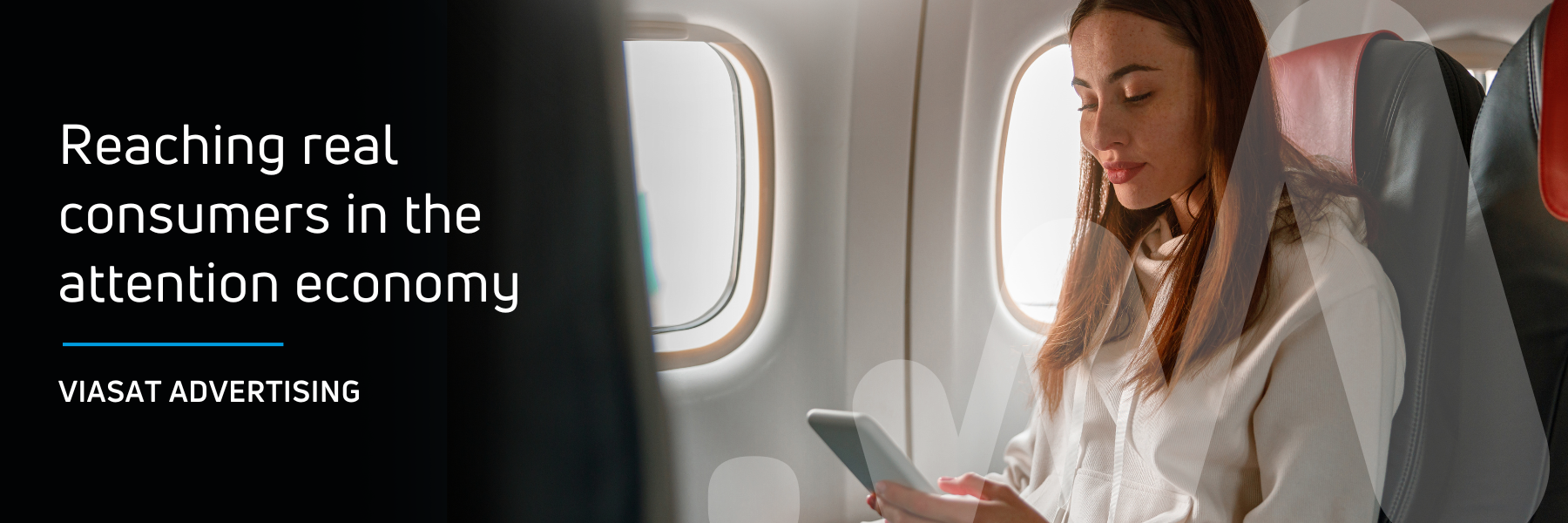Out-of-home (OOH) and digital channels are central to modern marketing campaigns, and it’s easy to see why: they’ve made a name for themselves as a surefire way to reach your customers.
But that’s not always the case. In fact, you can easily sink plenty of money into them without much to show for it. Whether your ads are being seen by a fraction of the people you think, or your return on investment is near-impossible to discern, their flaws are becoming harder to ignore.
So what if you could guarantee that your ads were being seen, and you had the metrics to prove it? Your third option is in-flight advertising, and it delivers the best of both worlds.
So many bots, so little time
Digital advertising is a massive market: spending in the space is forecast to reach $1 trillion in 2024, with just over half going to Alphabet, Meta, Amazon, Alibaba, and TikTok.1
But there’s something suspicious going on beneath the surface. Bots are constantly scraping the internet for information, and every time they come across your ad, it counts as a ‘view’. This means a significant proportion of the views you’re amassing aren’t actually potential customers, even though you’re paying as if they were. In fact, this so-called ‘ad fraud’ added up to $84 billion in 2023 – or roughly 22% of all ad spend.2
This is making high-quality media opportunities increasingly difficult to find, and it limits your ability to deliver for clients. It’s also driving up the resource and brainpower costs that go into campaign creation and implementation, which could be having a quietly significant impact on your bottom line.
Are “projections” just guesswork?
To OOH’s credit, you can be sure that your ad is being seen by real people, whether they’re strolling past a billboard or waiting at a bus shelter.
But tracking the impact of OOH is notoriously difficult. It’s hard to know how many people saw your six-sheet in the first place, let alone whether they went on to engage with your brand or investigate your offer more deeply.
Econometrics can devise models and projections, it’s true, but hiring a dedicated firm is an added expense on top of the marketing campaign itself. And even then, it’s still inherently speculative: as the World Economic Association has noted, ‘most work in econometrics is made on the assumption that the researcher has a theoretical model that is “true.” It is a belief impossible to support.3
The limitations of OOH are apparent in the numbers. In 2008, the North American market spent $7.3 billion on OOH. In 2023, this was $8.7 billion – just $1.4 billion worth of growth in 15 years.4 This, even as the advertising industry as a whole has ballooned in size, proving there’s an appetite for high-quality, trackable leads.
Bots don’t fly
In-flight advertising is nothing new: posters on overhead lockers and logos on drink napkins have long been a fixture of commercial flying – an environment where passengers have a heightened propensity to buy.
But it’s never been done quite like
Viasat Advertising, which enables brands to reach consumers though the airline’s in-flight portal. It's the best of both OOH and digital, with none of the downsides. For one thing, you know you’re getting your message directly to a captive audience of real people - with time on their hands. But it’s a digital channel, which means you’re able to accurately track performance. And since bots can’t access airline inflight portals, you know every click, view, and impression is legitimate.
Meet your audience where they are
There’s another major benefit: you can customize your ad delivery to your business offering. You could promote local attractions, events, or services based on an aircraft’s destination; food, hotels, or leisure activities based on arrival times; and luxury goods and big-ticket items based on loyalty data and the class passengers are flying in. The possibilities are endless.
The Viasat Advertising platform has already been adopted by some of the most notable global airlines, and it’s live and flying to over 238 destinations and reaches up to 19 million passengers every month. So get onboard and we’ll help you deliver targeted messages at the perfect moment.




